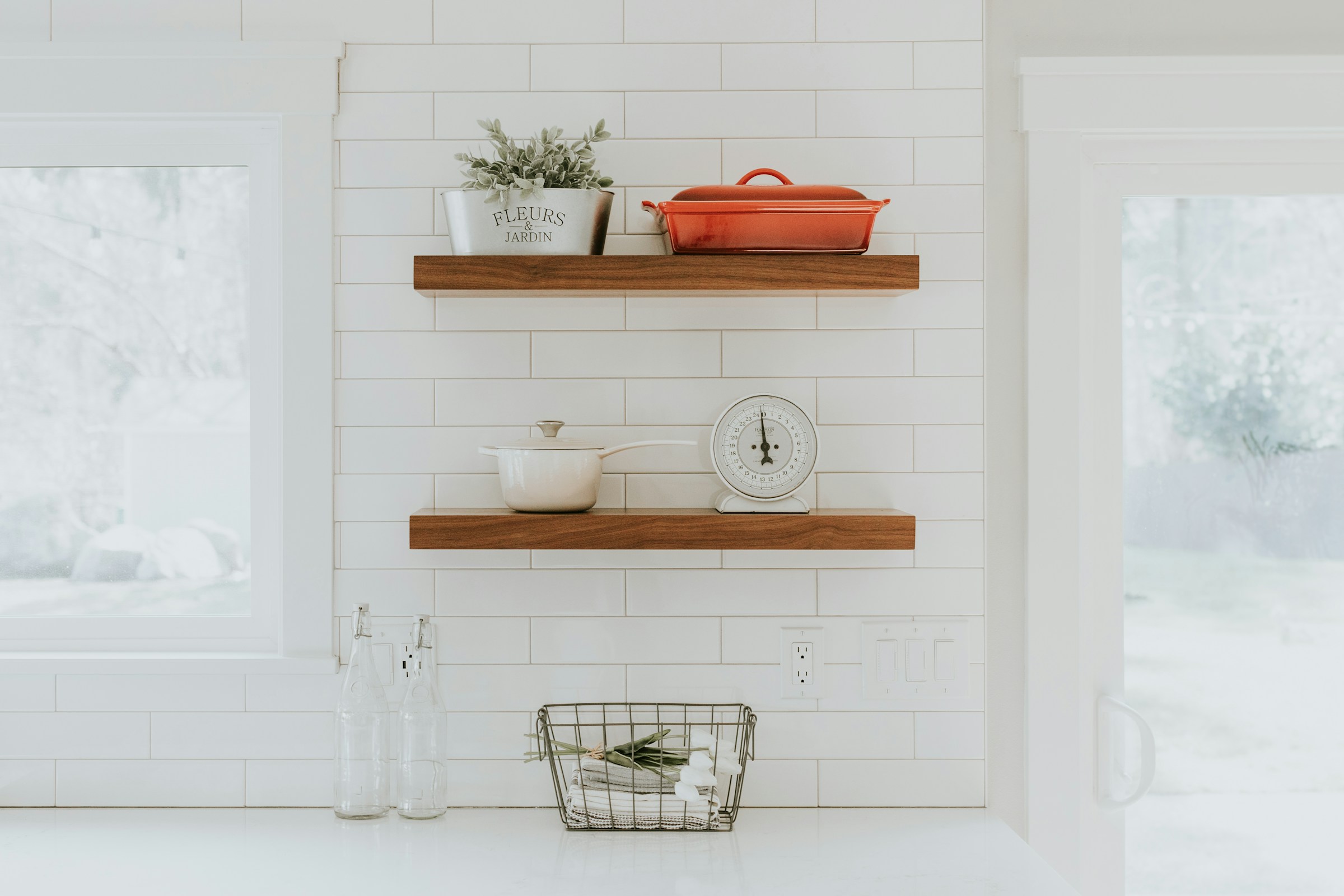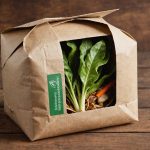Humidity in kitchen pantries can lead to spoilage and waste, particularly in the UK’s damp climate. Effective management strategies not only preserve the shelf life of your food but also enhance the overall organisation of your pantry. Discover practical solutions tailored for UK households, ensuring your food remains fresh and ready for use. Learn how to maintain an optimal environment that meets your cooking needs while combating the challenges of excess moisture. Your pantry’s health is just a few smart strategies away.
Understanding Humidity and Its Impact on Kitchen Pantries
Humidity plays a crucial role in food preservation within kitchen pantries. It refers to the amount of moisture present in the air. When humidity levels are too high, it can lead to several issues that affect food quality and safety. Humidity effects can cause food to spoil faster, encouraging the growth of mould and bacteria. This is particularly problematic for items like grains and cereals, which can absorb moisture and become stale or mouldy.
Additional reading : Stylish Strategies for Seamlessly Incorporating a Wine Cooler into Your UK Kitchen Design
Common problems in kitchen pantries due to high humidity include the clumping of powdered goods, such as flour and sugar, and the degradation of packaging, which can lead to contamination. Additionally, excessive moisture can attract pests, further compromising pantry organization and food safety.
Maintaining optimal humidity levels is essential for preserving the quality of your food. Ideally, a pantry should have a humidity level between 30% and 50%. This range helps prevent spoilage and extends the shelf life of pantry staples. Using a hygrometer can help monitor humidity levels, allowing for adjustments as needed. Implementing solutions like dehumidifiers or moisture-absorbing products can effectively manage humidity, ensuring a well-organized and safe pantry environment.
Also read : Mastering Kitchen Design: A Step-by-Step Guide to Planning Your UK Terraced House Layout
Assessing Humidity Levels in Your Pantry
Understanding and managing humidity levels in your pantry is essential for maintaining food quality. To achieve this, humidity monitoring tools such as hygrometers are invaluable. These devices provide accurate readings of the moisture content in the air, allowing you to take proactive measures.
Recommended Tools for Measuring Humidity
A hygrometer is the most effective tool for monitoring humidity levels. Digital hygrometers are particularly user-friendly, offering precise readings and often featuring alerts for significant changes. Place the hygrometer in a central location within the pantry for the most accurate assessment.
Interpreting Humidity Readings
Once you have a hygrometer in place, understanding its readings is crucial. Aim to keep humidity levels between 30% and 50% to ensure optimal food preservation. If readings consistently fall outside this range, consider implementing solutions such as dehumidifiers or moisture absorbers.
Signs of Excessive Humidity
Be vigilant for signs of excessive humidity, such as condensation on walls or packaging, musty odours, and the clumping of dry goods. These indicators suggest that immediate action is necessary to prevent spoilage and potential health risks. By regularly checking your hygrometer and responding to its readings, you can effectively manage your pantry’s humidity levels.
Effective Ventilation Techniques
Proper pantry ventilation is crucial for controlling humidity and ensuring food preservation. By facilitating airflow, you can significantly reduce moisture levels, preventing spoilage and maintaining the quality of your pantry items.
Importance of Proper Ventilation
Ventilation helps in moisture control by allowing humid air to escape and fresh air to circulate. This exchange is vital to prevent the build-up of moisture that can lead to mould growth and spoilage. Without adequate ventilation, even the best humidity monitoring tools may fall short in maintaining the desired conditions.
Strategies for Improving Airflow
To enhance airflow, consider these strategies:
- Install adjustable vents to regulate air exchange.
- Use portable fans to circulate air within the pantry.
- Keep pantry doors open periodically to allow air movement.
Best Practices for Using Windows and Vents
Utilise windows and vents effectively to manage humidity. Ensure that windows are opened during dry weather to allow moisture-laden air to exit. Install vents at strategic locations to facilitate continuous air exchange. These practices not only help in controlling humidity but also improve overall air quality, creating a healthier pantry environment. By implementing these techniques, you can achieve optimal moisture control and prolong the shelf life of your pantry staples.
Utilizing Dehumidifiers for Kitchen Pantries
Dehumidifiers play a vital role in moisture reduction within kitchen pantries, helping to maintain optimal conditions for food preservation. Selecting the right type and size of dehumidifier is crucial for effective appliance use.
Types of Dehumidifiers Suitable for Kitchen Pantries
There are various dehumidifiers available, each catering to different needs. Portable dehumidifiers are ideal for small to medium-sized pantries, offering flexibility and ease of use. For larger spaces, consider a whole-house dehumidifier, which integrates with your HVAC system for comprehensive moisture control.
Choosing the Right Size and Capacity
When selecting a dehumidifier, consider the size and humidity level of your pantry. A unit with a higher capacity is necessary for larger spaces or areas with significant moisture issues. Measure your pantry to determine the appropriate dehumidifier size, ensuring it can effectively manage humidity levels.
Maintenance Tips for Dehumidifiers
To ensure your dehumidifier remains effective, regular maintenance is essential. Empty the water reservoir frequently to prevent overflow and clean the filter periodically to maintain airflow. Additionally, check the unit for any signs of wear or damage, addressing issues promptly to prolong its lifespan and efficiency. Proper maintenance ensures your dehumidifier continues to provide reliable moisture reduction in your pantry.
Moisture-Absorbing Materials and Their Applications
Moisture-absorbing materials are essential in maintaining optimal humidity levels in kitchen pantries. They help prevent spoilage and ensure food safety. Silica gel is a popular choice due to its effectiveness in absorbing moisture. These small packets can be placed in airtight containers to keep food items dry. Another effective option is activated charcoal, which not only absorbs moisture but also neutralises odours, making it ideal for pantry use.
How to Use Moisture Absorbers
To maximise the benefits of moisture absorbers, strategically place them in areas prone to humidity, such as near grains and cereals. Replace them regularly to maintain their effectiveness. It’s also beneficial to use moisture absorbers in combination with other humidity control methods, like dehumidifiers, for comprehensive moisture management.
DIY Natural Solutions
For those seeking natural solutions, consider using baking soda or rice as moisture absorbers. Place them in open containers or breathable bags within the pantry. These natural ingredients are readily available and cost-effective, providing an eco-friendly alternative for moisture control. By incorporating these materials, you can effectively manage humidity levels, ensuring a well-preserved pantry environment.
Best Storage Practices for Food Items
Achieving effective food storage in your pantry involves strategic pantry organization and vigilant moisture control. Selecting the right storage containers is crucial. Opt for airtight containers to safeguard dry goods like grains and cereals from moisture. Glass or BPA-free plastic containers are excellent choices due to their durability and ability to form tight seals.
Optimal Placement of Food Items
Where you place food items within your pantry can significantly impact humidity management. Store moisture-sensitive items, such as flour and sugar, on higher shelves where humidity tends to be lower. Conversely, canned goods and items less susceptible to moisture can be placed on lower shelves. This strategic placement helps maintain the quality and shelf life of your pantry staples.
Guidelines for Storing Different Types of Food
Different food types require tailored storage solutions to thrive under varying humidity conditions. For instance, root vegetables like potatoes prefer a cool, dark environment, while herbs benefit from being stored in breathable bags to prevent wilting. By understanding these nuances, you can better protect your food from the adverse effects of humidity, ensuring a well-organized and efficient pantry.
Regular Maintenance and Monitoring
Consistent pantry maintenance is essential for ensuring optimal food safety and longevity of stored items. Establishing a routine for humidity monitoring helps in maintaining the right conditions and preventing spoilage.
Importance of Routine Checks
Regular checks are vital for identifying and addressing potential issues before they escalate. This includes inspecting for signs of moisture, such as condensation or mould, and ensuring that storage containers are sealed properly. By routinely assessing your pantry, you can swiftly tackle any problems, safeguarding your food supplies.
Creating a Monitoring Schedule
To effectively manage humidity, create a schedule for regular checks. Aim to monitor humidity levels weekly using a hygrometer. This allows for timely adjustments, ensuring conditions remain within the ideal range. Incorporate visual inspections to detect any signs of excess moisture or pest activity.
Best Practices for Food Safety
Maintaining food safety requires a proactive approach. Regularly rotate pantry items, using older products first to prevent expiration. Keep a clean and organised space, ensuring that all food is stored in appropriate, airtight containers. By adhering to these best practices, you can maintain a safe and efficient pantry environment, reducing the risk of contamination and spoilage.
Adapting Strategies to UK Climate Conditions
Navigating the UK climate is essential for effective pantry management. The country’s weather, characterised by its variability, significantly influences seasonal humidity levels. Understanding these fluctuations is crucial for maintaining optimal pantry conditions.
Seasonal Adjustments for Pantry Humidity
In the UK, seasonal humidity can vary greatly. During winter, indoor heating can reduce moisture levels, potentially leading to overly dry conditions that affect food quality. Conversely, summer often brings higher humidity, necessitating additional moisture control measures. To adapt, consider adjusting your dehumidifier settings or increasing the use of moisture-absorbing materials in warmer months.
Regional Considerations in the UK
The UK’s diverse regions experience different humidity levels. Coastal areas, for instance, may contend with higher moisture due to proximity to the sea, while inland regions might face drier conditions. Tailor your humidity management strategies to these regional considerations by consulting local resources for specific advice.
Local Resources for Humidity Management
Utilise local tools and resources to manage humidity effectively. Many UK-based retailers offer hygrometers and moisture absorbers tailored to regional needs. Engaging with community forums or local experts can provide insights into best practices for maintaining pantry humidity in your specific area.












